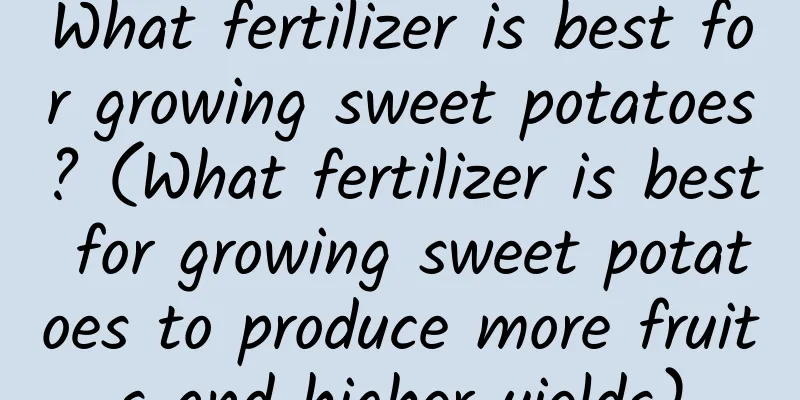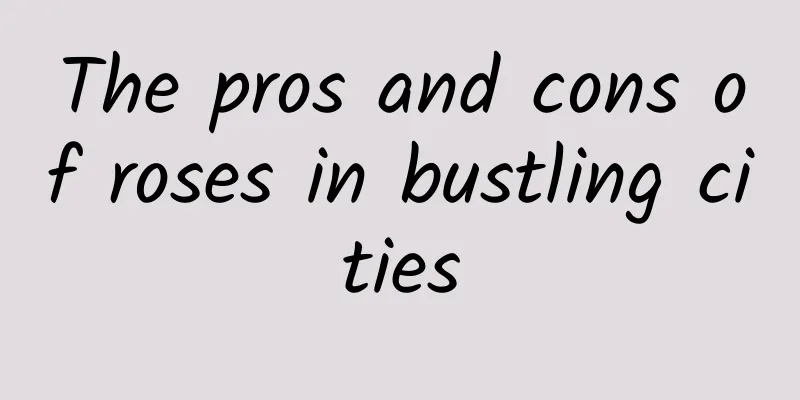What fertilizer is best for growing sweet potatoes? (What fertilizer is best for growing sweet potatoes to produce more fruits and higher yields)

|
Sweet potatoes, as the most popular "fourth staple food", were unexpectedly "killed" by potatoes. Both contain a lot of starch, so why did potatoes prevail? It may be because potatoes have a stronger ability to adapt to soil and environment! What fertilizer is best for sweet potatoes?Although the planting method is important, the method of fertilization is also critical to achieving high yields. Based on the experience of the past two years, let’s communicate with farmer friends! The yield is the key to our sweet potato farming, but if the sweet potatoes we grow are not sweet, not delicious, and have a bad taste, it is difficult to sell them at a good price. Sweet potatoes are underground tuber crops, which means they have high requirements for water, soil, light and temperature. However, the biggest influence on yield is fertilization, so we need to work harder in this area to get more sweet potatoes. Fortunately, we can control fertilization, unlike sunlight and temperature which are uncontrollable. According to relevant data, the production of 1,000 kilograms of sweet potatoes requires 3.5 kilograms of pure nitrogen, 1.75 kilograms of pure phosphorus, and 6.3 kilograms of pure potassium. That is to say, during the growth process, sweet potatoes require more nitrogen and potassium, and the least phosphorus. Moreover, the amount of potassium required is nearly twice that of nitrogen. At this point, farmers have understood that when we choose fertilizers, we should choose fertilizers with high potassium, medium nitrogen and low phosphorus, because sweet potatoes like potassium. If we choose (3 17 or 3 15), either potassium is not enough, or nitrogen and phosphorus are too much, and they cannot be absorbed and wasted. Therefore, we can prepare fertilizers ourselves according to the fertilizer requirements of sweet potatoes, which is more scientific and saves money. But farmers should understand that although sweet potatoes like potassium, they do not need a lot of potassium throughout the growth period. This is easy to understand. For example, when we grow corn, we use a lot of nitrogen fertilizer because corn plants are tall, have many leaves, and have good photosynthesis, so they need a lot of nitrogen. However, a large amount of nitrogen is not required throughout the entire growth period. It is only when the plant enters the trumpet-mouth stage and reproductive growth and vegetative growth are taking place simultaneously that a large amount of nitrogen fertilizer is needed. We use a lot of nitrogen fertilizer in the corn seedling stage, which is not only a waste, but also causes the corn plants to grow thin and long, making them prone to lodging in the later stage, and it is impossible to achieve high yields. Therefore, if we want crops to grow well and have high yields, we must understand the fertilizer requirements of crops, and the same is true for sweet potatoes. Sweet potatoes are underground tuber crops, so when the sweet potato rhizomes are expanding, the potassium requirement begins to gradually increase. When the rhizomes begin to swell, farmers are advised to spray 0.3% potassium dihydrogen phosphate on the leaves. Why spray potassium dihydrogen phosphate on the leaves at this time? Because the sweet potato leaves are in their prime growth period and have a strong ability to absorb fertilizer. As the roots of the sweet potatoes continue to expand for a period of time, I will find that cracks have appeared in the ground. At this time, we can use 1 kg of potassium dihydrogen phosphate + 800-1000 kilograms of water per mu to irrigate the cracks. The liquid medicine will be distributed along the cracks in the ground around the rhizomes, and the absorption and utilization rate will be relatively high. If we irrigate it again half a month later, we can get a higher yield of sweet potatoes that are sweeter and crispier. Finally, I would like to remind farmers not to be obsessed with those small formulas, such as wood ash, which we can use for small-scale planting. However, they are not very effective in large-scale planting because these small formulas are too time-consuming and labor-intensive, and they are not as cost-effective and effective as using pesticides and fertilizers directly. For example, a friend of mine rented 400 acres of land to grow potatoes. When he was growing potatoes, he used traditional methods, but in the end the yield did not increase. Although I didn't lose money, I didn't make much money after deducting some expenses. The annual rent for one acre of land is 800 yuan, and hiring a worker costs 200 yuan a day. So we have to change our methods when we need to. It doesn't matter if we plant ten or eight acres, but when we plant more land, there are expenses everywhere. If we use small formulas, no matter how much we increase the yield, artificial fertilizers are not enough. |
Recommend
3 pots of flowers on the balcony, no need to spend money on medicine, everyone can grow them
3 pots of flowers, no medicine cost It is said th...
How to care for Vanda
Vanda Growth Conditions Vanda orchid needs more l...
Cultivation methods and precautions of Livistona
1. Maintenance methods 1. Temperature: It likes t...
What are the benefits and functions of overnight tea for watering flowers? What flowers are suitable for watering
Benefits of Overnight Tea for Watering Flowers Wh...
The cultivation method and precautions of Yimoxiang
1. Sunlight To grow the osmanthus fragrans, you n...
When is the best time to plant Zephyranthes
Best time to plant Zephyranthes Spring and summer...
Is coriander easy to grow? How to grow coriander? When is the best time to plant it?
Coriander is a common vegetable in our lives. It ...
How to manage chives to make them strong?
Chives are a vegetable that many people like to e...
What soil to use for violets
The most commonly used three-in-one soil for viol...
How to grow apple mint
1. Lighting: This plant loves sunlight very much,...
Can bamboo cypress be hydroponically cultivated? Hydroponics methods and precautions
Can bamboo cypress be hydroponically cultivated? ...
Cultivation methods and precautions of succulent plants
Succulent plants are not only easy to grow, but a...
How to grow asparagus fern in autumn?
Asparagus fern has always been a favorite plant a...
How to make cockscomb bloom on New Year's Day
1. Repotting in Advance In winter we have to move...
How to grow the newly bought seeds of fortune
1. Lighting The seeds of the Chinese rich tree pr...









